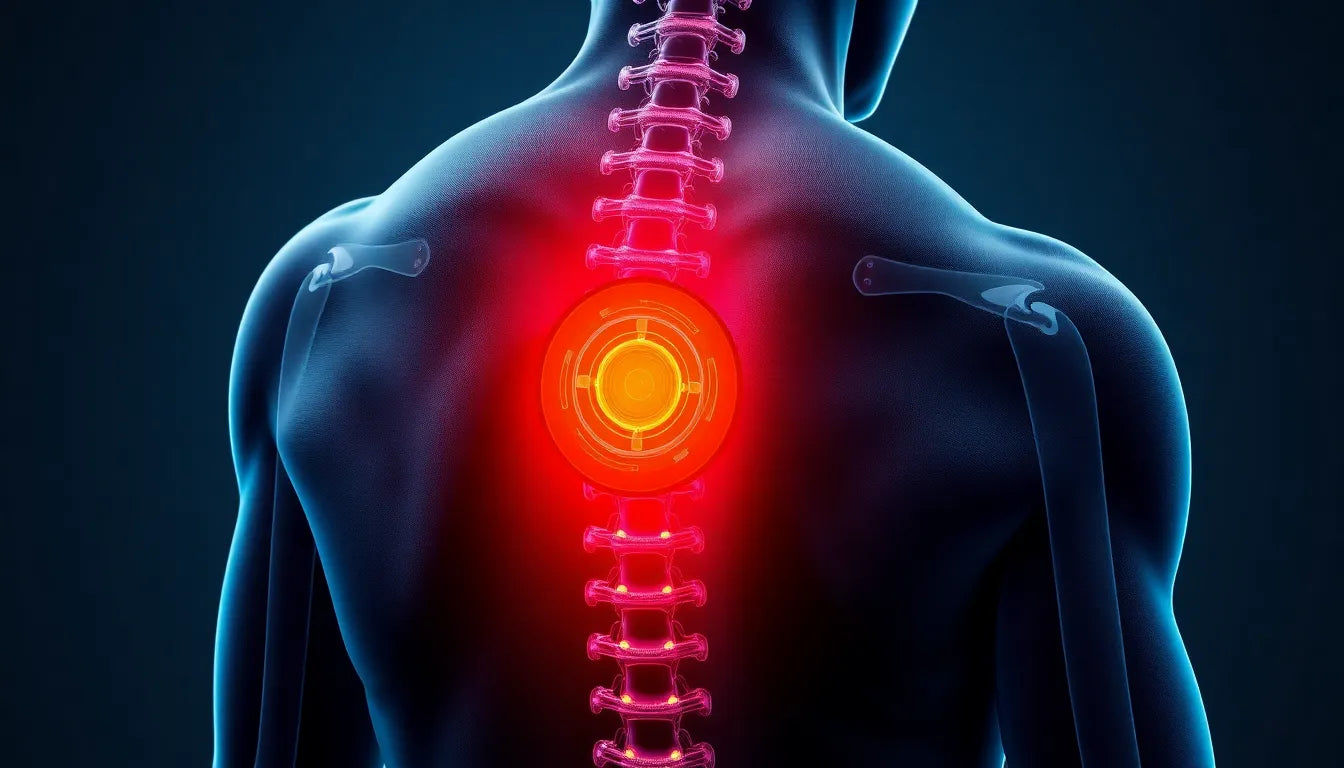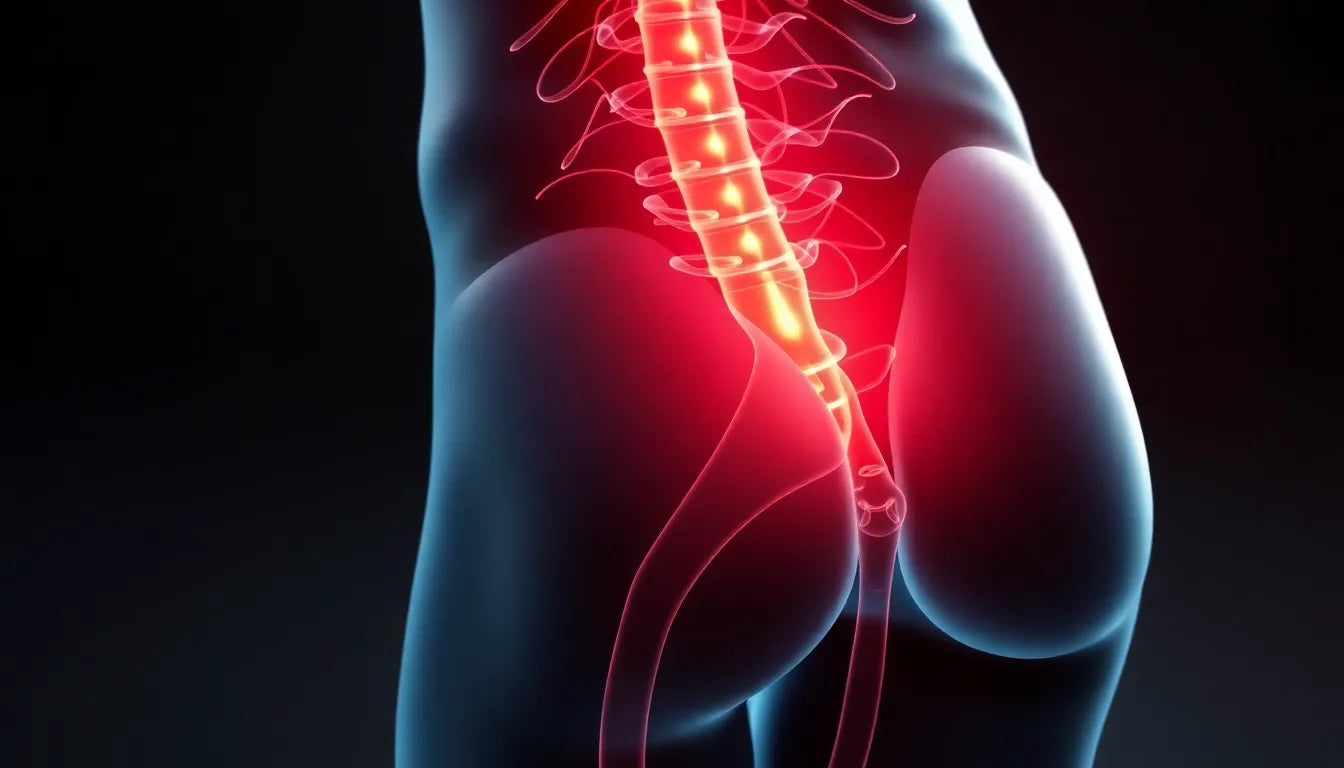Understanding the intricacies of how a herniated disc heals is essential for anyone affected by this common spinal issue. A herniated disc, often referred to as a slipped or ruptured disc, occurs when the soft inner gel of a spinal disc pushes through a tear in its tougher exterior. This condition can arise due to aging, injury, or repetitive strain, leading to discomfort and disruption in daily life.
Herniated discs are a prevalent concern, affecting many individuals across various age groups. They can significantly impact one's ability to perform routine activities, often resulting in pain, numbness, or weakness in the limbs. The prevalence of this condition underscores the importance of understanding the healing process, as it empowers individuals to manage their symptoms effectively and make informed decisions about their recovery journey.
Why understanding the healing process matters
Gaining insight into the healing stages of a herniated disc is crucial for those navigating the challenges of this condition. Many might be surprised to learn that most herniated discs heal naturally over time, without the need for surgical intervention. This natural healing process involves the reduction of inflammation, tissue repair, and the gradual restoration of function. By understanding these stages, individuals can better anticipate the progression of their symptoms and adopt appropriate strategies to support their recovery.
The body's remarkable ability to heal itself is a comforting notion for those dealing with the discomfort of a herniated disc. Recognizing the signs of healing and knowing what to expect can alleviate anxiety and encourage proactive management of the condition. This knowledge serves as a foundation for exploring practical recovery tips and conservative treatment approaches that can enhance the healing process.
Did you know most herniated discs heal without surgery?
This surprising fact sets the stage for a deeper exploration into the stages of healing from a herniated disc. While the prospect of surgery can be daunting, the reality is that many individuals experience significant improvement through conservative treatments and lifestyle adjustments. By delving into the stages of healing, we can uncover practical insights and strategies to facilitate recovery and improve quality of life.
In the following sections, we will explore the natural healing timeline, the stages of recovery, and key signs of healing. We will also discuss conservative treatment approaches that can aid in recovery, highlighting the importance of patience and persistence in the healing journey. Understanding these elements can empower those affected by herniated discs to take control of their recovery and move towards a pain-free life.
natural healing timeline for a herniated disc
Understanding the natural healing timeline of a herniated disc is crucial for setting realistic expectations about recovery. Typically, the healing process can range from 4 to 8 weeks, but in some cases, it may take up to 12 months for complete recovery. It is important to note that the reduction of symptoms, rather than imaging results, is the most reliable indicator of healing progress. Patients often begin to experience relief as inflammation decreases and tissue repair progresses, leading to a gradual return of normal function.
stages of healing from a herniated disc
acute inflammation (weeks 1-2)
The initial stage of healing, known as acute inflammation, occurs during the first one to two weeks. This phase is characterized by severe pain and inflammation as the body responds to the injury. Rest and effective pain management are crucial during this period to minimize discomfort and prevent further damage. It's important to avoid activities that could exacerbate the condition, allowing the body to focus on the initial healing process.
gradual improvement (weeks 2-6)
As the healing process progresses into the second stage, patients typically notice a gradual improvement in symptoms. During weeks two to six, inflammation begins to subside, pain diminishes, and mobility improves. This stage often marks the introduction of physical therapy, which plays a vital role in strengthening the muscles surrounding the spine, enhancing flexibility, and promoting proper posture. Physical therapy not only aids recovery but also helps prevent future injuries.
stabilization/remodeling (weeks 6-12+)
The final stage, stabilization and remodeling, occurs from weeks six to twelve and beyond. During this phase, the body continues to strengthen and stabilize the affected area, with a focus on restoring strength and flexibility. Nerve recovery is also a critical component, as it can significantly impact the return of normal function. It is essential to maintain a consistent rehabilitation routine and avoid activities that could lead to re-injury, ensuring a full and lasting recovery.
key signs of healing
Monitoring signs of healing is essential for assessing progress and adjusting recovery strategies as needed. Key indicators include a reduction in localized and radiating pain, improved mobility, and increased muscle strength. Additionally, better sleep quality and diminished sciatica symptoms are positive signs that the herniated disc is healing. These improvements not only enhance physical well-being but also contribute to a more active and fulfilling lifestyle.
conservative treatment approaches
Conservative treatment approaches are often effective in managing herniated disc symptoms and supporting the healing process. Common non-surgical treatments include rest, physical therapy, pain medications, and the application of ice or heat to reduce inflammation and alleviate discomfort. Engaging in regular exercise and making ergonomic adjustments to daily activities can significantly improve outcomes. Surgery is generally considered a last resort, reserved for cases where symptoms persist despite conservative measures or when severe neurological deficits are present.
Understanding the stages of healing and the importance of conservative treatment empowers individuals to take proactive steps in their recovery journey. By adhering to recommended therapies and making lifestyle adjustments, patients can enhance their healing process and work towards a pain-free life.
Factors influencing the healing of a herniated disc
The healing process of a herniated disc can vary significantly from one individual to another, influenced by several factors. The severity of the herniation is a primary determinant; more severe cases may require a longer recovery period. Age is another critical factor, as younger individuals often experience faster healing due to their bodies' robust regenerative capabilities. Overall health plays a crucial role as well; those with strong immune systems and healthy lifestyles typically recover more swiftly. Adherence to therapy, including physical therapy and recommended lifestyle modifications, is essential for optimizing recovery outcomes.
While many individuals see significant improvement within 4 to 8 weeks, some may experience symptoms for up to a year, particularly if they do not consistently engage in physiotherapy or make necessary lifestyle changes. Maintaining a proactive approach to treatment and recovery is key to achieving a full recovery and minimizing the risk of re-injury.
Professional guidance and recognizing red flags
Seeking professional guidance is vital for creating an individualized treatment plan that addresses the unique needs of each patient. Healthcare providers can offer personalized advice on managing symptoms and preventing further injury. It is crucial to be aware of red flags that may indicate a need for medical intervention. Symptoms such as worsening pain, persistent numbness or weakness, or lack of improvement over time should prompt a consultation with a healthcare professional.
Early intervention can prevent complications and ensure that any necessary adjustments to the treatment plan are made promptly. By staying informed and vigilant, individuals can better navigate their recovery journey and work towards a successful outcome.
Frequently Asked Questions
Q1: How can I speed up the healing process?
A1: To accelerate healing, engage consistently in physical therapy, make ergonomic adjustments to your daily activities, and follow medical advice. These measures can significantly enhance recovery.
Q2: When should I consider surgery for a herniated disc?
A2: Surgery should be considered if symptoms persist beyond several months despite conservative treatments, or if you experience severe neurological deficits, such as significant weakness or loss of bladder control.
Q3: Can lifestyle changes help in the healing process?
A3: Yes, lifestyle changes such as maintaining a healthy weight, staying active, and using ergonomic aids can support the healing process and prevent future injuries.
Q4: What are the signs that my herniated disc is healing?
A4: Positive indicators of healing include reduced pain, improved mobility, and better sleep quality. These signs suggest that the body is recovering and regaining function.
Q5: Is it normal for symptoms to fluctuate during recovery?
A5: Yes, it is common for symptoms to vary during recovery. However, a gradual overall improvement is expected. If symptoms worsen or fail to improve, it is advisable to seek medical evaluation.
Sources
- Cleveland Clinic. "Herniated Disk: Overview and Recovery."
- Mayo Clinic. "Herniated Disk: Diagnosis and Treatment."
- Spine-health. "Herniated Disc: Symptoms, Causes, and Treatment."
- Advanced Spine Center. "Herniated Disc Treatment and Recovery Stages."
- ADR Spine. "Personalizing Herniated Disc Treatment Plans."
- Illinois Pain Institute. "Signs Your Herniated Disc Is Healing."
- OWCH Health. "Sciatica Recovery Timeline and Tips."


















